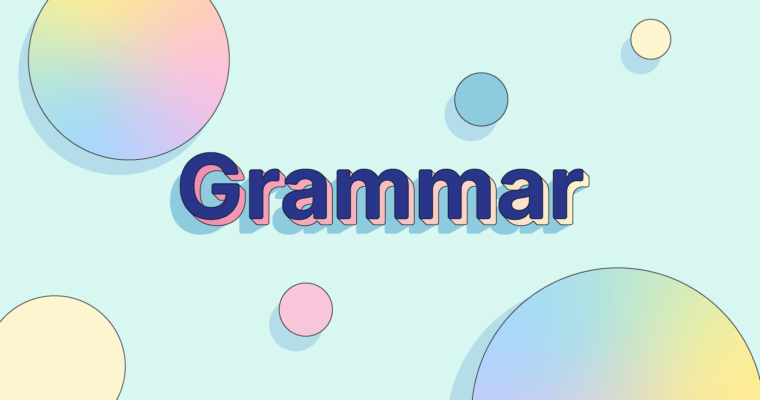
The simple subject in grammar is one of the most important parts of sentence structure. It defines who does the action of the sentence and also determines whether the verb should be singular or plural. Here, we’ll look into what a simple subject is and how to identify it.
What is a simple subject?
The simple subject is the noun that acts as the subject of a sentence, without any extra words like articles or adjectives. Consider the following example sentence.
The fat cat pats the mat.
The simple subject is only the word cat. The phrase the fat cat is the complete subject, but the article the and the adjective fat are not part of the simple subject.
Simple subjects are just one noun, but remember that proper nouns and compound nouns can be more than one word.
China’s Three Gorges Dam is the largest power plant in history.
In this example, the proper noun Three Gorges Dam is the simple subject. All three words are part of one proper noun. The possessive noun China’s is not part of the simple subject; it describes the Three Gorges Dam, but it’s not part of the name.
Some types of sentence structures can have more than one simple subject. Compound sentences (and compound-complex sentences) connect two or more subjects using a coordinating conjunction like and.
My father and I prefer to watch other people play catch.
Keep in mind that with imperative sentences, or commands, the subject is usually implied, not written out.
[You] Turn left to get to Main Street.
Simple subject vs. complete subject
What’s the difference between a simple subject and a complete subject? While the simple subject only includes a single noun, the complete subject includes both the simple subject and all the words and phrases that describe it.
The red candies that taste like strawberries at the end of the shelf are my favorite.
In the example, the complete subject is the long noun phrase the red candies that taste like strawberries at the end of the shelf. However, only the word candies is the simple subject.
Simple subjects in subject-verb agreement
The most important part about the simple subject in grammar is its role in subject-verb agreement. Whether a simple subject is singular or plural determines whether the verb should be singular or plural. Singular subjects take singular verbs, and plural subjects take plural verbs.
One dog digs in dirt.
Many dogs dig in dirt.
In the first example, the singular simple subject dog uses the singular form of the verb digs. Don’t be confused by the s in the verb—most nouns use s for their plural, but a lot of verbs use s for the singular.
Knowing whether to make a verb singular or plural gets confusing when the complete subject uses a lot of extra words.
A team of retired, Canadian athletes is in first place.
In this example, you might see the plural word athletes and use the plural verb are. But the simple subject is actually team, a singular noun, so the correct choice is the singular verb is. The other words in the complete subject (of retired, Canadian athletes) are just a long prepositional phrase that describes the word team.
Be careful, though. Some words like all or half can be either singular or plural, depending on context. You can tell for sure by checking the prepositional phrase that follows those words. If the prepositional phrase uses a singular noun, treat the whole subject as singular. If it uses a plural noun, treat it as plural.
Half of people are under 30 years old worldwide.
Half of a person is made of water.
Similarly, sometimes an entire noun phrase works together as the simple subject of a sentence. We do this when we’re talking about a concept as a whole, instead of its specific parts.
Millions of dollars is all I’ve ever wanted.
In these cases, treat the subject as singular even if it includes plural nouns.
How to identify the simple subject in a sentence
The easiest way to identify the simple subject in a sentence is the process of elimination: remove all the words that are not the simple subject. Some words like the articles a and the are easy to ignore, but other words can be more confusing. To save time, here’s a list of words and phrases not used in the simple subject:
- Articles (the, a, an)
- Adjectives (big, pink, tremendous)
- Prepositional phrases (in the evening, on the corner, under the sea)
- Relative clauses (that . . . , which . . . , whose . . . )
- Possessive nouns and possessive adjectives (my, their, Maria’s)
- Participial phrases (hidden over there, waiting in the bushes, tired after work)
- Appositives
Let’s look at an example sentence with an especially long complete subject.
Lurking in the shadows, the old statue in town that overlooks the square, usually a comforting sight, appears scary at night.
Using the process of elimination, we can remove all the extra words and phrases to reveal the simple subject: the single word statue.
Lurking in the shadows, the old statue in town that overlooks the square, usually a comforting sight, appears scary at night.
Examples of the simple subject in grammar
Most forms of nouns can be simple subjects. This includes not only common nouns and proper nouns but also pronouns and even the noun forms of verbs, like gerunds and infinitives. Here are some examples of the different types of simple subjects in grammar.
Common noun simple subject example
After much consideration, marathons were named the best way to exercise.
Proper noun simple subject example
After much consideration, the Boston Marathon was named the best way to exercise.
Pronoun simple subject example
After much consideration, it was named the best way to exercise.
Gerund simple subject example
After much consideration, running was named the best way to exercise.
Infinitive simple subject example
After much consideration, to run a marathon was named the best way to exercise.
Simple subject FAQs
What is a simple subject?
The simple subject is the noun that acts as the subject of a sentence, without any extra words like articles or adjectives. In this example sentence, “The fat cat pats the mat,” the simple subject is only the word cat.
How is a simple subject different from a complete subject?
While the simple subject usually only includes a single noun, the complete subject includes both the simple subject and all the words and phrases that describe it. In this example sentence, “The fat cat pats the mat,” the complete subject is the fat cat, but the simple subject is only cat.
How do you identify the simple subject in a sentence?
The easiest way to identify the simple subject in a sentence is to remove all the words and phrases that are not it. Simple subjects do not include words like articles, adjectives, prepositional phrases, relative clauses, possessive nouns/adjectives, participial phrases, and appositives.


